LIB 1.0% vs NAT
Incumbent MP
Rick Wilson, since 2013.
Geography
Regional Western Australia. O’Connor is a massive electorate, covering the southern half of Western Australia away from the heavily-populated south-western corner of the state. O’Connor covers the major centres of Kalgoorlie, Albany and Esperance, as well as southern parts of the wheatbelt. The seat stretches as far west as Collie, Bridgetown and Manjimup.
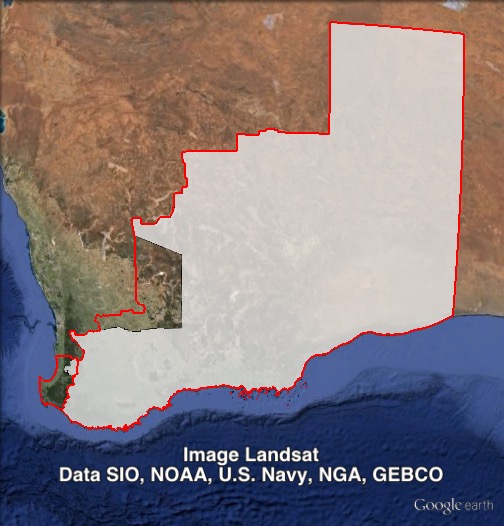
Redistribution
O’Connor lost Bruce Rock, Narembeen, Quairading, Westonia and Yilgarn council areas to Durack, and gained the Collie council area from Forrest.
History
A seat has existed with the name of O’Connor since 1980, but the boundaries were redrawn radically before the 2010 election. The neighbouring seat of Kalgoorlie was abolished, with northern parts of Kalgoorlie and O’Connor going into a new seat of Durack, with O’Connor taking in southern parts of Kalgoorlie.
O’Connor was won in 1980 by the Liberal Party’s Wilson Tuckey.
Tuckey served on the Liberal frontbench from 1984 to 1989 and again from 1993 to 1996. He served as a minister in the Howard government from 1998 to 2003.
Tuckey developed a reputation as a maverick and a member of the Liberal Party’s far right. The ALP never threatened Tuckey’s hold on the seat, but in 2007 he was considered at risk of losing. The Nationals gained a large swing and came within 3% of overtaking the ALP, while Tuckey’s primary vote fell below 50%.
Kalgoorlie had traditionally been dominated by the ALP, but was won by the Liberal Party’s Barry Haase in 1998.
Haase ran for Durack in 2010, while Tuckey again ran for O’Connor.
Tuckey was defeated in a close race by the Nationals candidate, Tony Crook. Crook benefited from Labor and Greens preferences.
After one term, Crook retired in 2013, and Liberal candidate Rick Wilson was elected by a narrow margin over the Nationals candidate.
Candidates
- Rick Wilson (Liberal)
- John Hassell (Nationals)
- Trevor Young (Australian Christians)
- Jon Ford (Labor)
- Stephen Carson (Rise Up Australia)
- Giz Watson (Greens)
Assessment
O’Connor is a marginal seat between the Liberal Party and the Nationals, but we’re now three years away from the Nationals holding this seat in 2010-2013, and the new Liberal MP should benefit from his own new personal vote. The fact that the Nationals have not yet announced a candidate is a sign that they will likely struggle, despite the slim margin.
2013 result
| Candidate | Party | Votes | % | Swing | Redist |
| Rick Wilson | Liberal | 32,284 | 39.1 | +0.8 | 38.6 |
| Chub Witham | Nationals | 20,914 | 25.4 | -3.5 | 23.9 |
| Michael John Salt | Labor | 14,234 | 17.3 | +0.1 | 19.2 |
| Diane Evers | Greens | 5,627 | 6.8 | -2.0 | 6.8 |
| Michael Anthony Lucas | Palmer United Party | 3,581 | 4.3 | +4.3 | 4.5 |
| Mike Walsh | Australian Christians | 2,079 | 2.5 | +2.5 | 2.5 |
| Jane Mouritz | Independent | 1,431 | 1.7 | +1.7 | 1.6 |
| Steven Fuhrmann | Family First | 698 | 0.9 | -0.6 | 0.9 |
| Phillip Bouwman | Katter’s Australian Party | 660 | 0.8 | +0.8 | 0.7 |
| Vanessa Korber | Rise Up Australia | 595 | 0.7 | +0.7 | 0.7 |
| Jean Robinson | Citizens Electoral Council | 407 | 0.5 | +0.0 | 0.5 |
| Informal | 5,206 | 6.3 |
2013 two-candidate-preferred result
| Candidate | Party | Votes | % | Swing | Redist |
| Rick Wilson | Liberal | 42,040 | 51.0 | +4.5 | 51.0 |
| Chub Witham | Nationals | 40,470 | 49.1 | -4.5 | 49.0 |
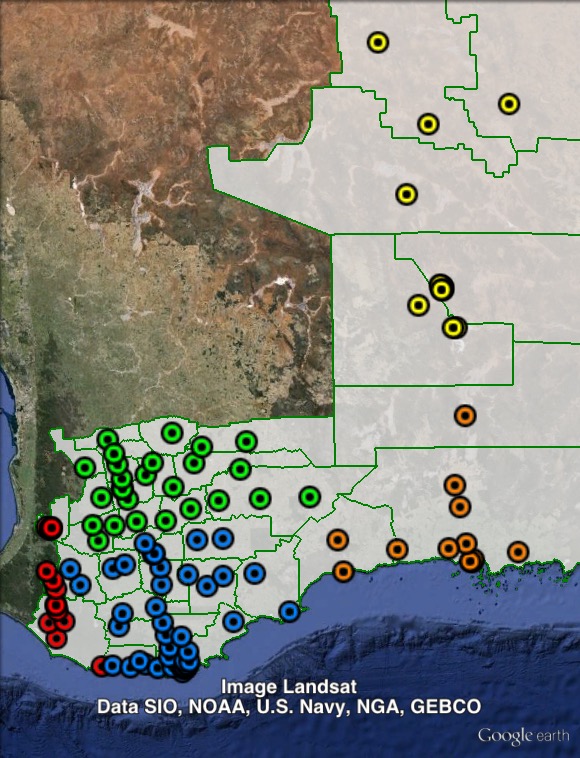
Booth breakdown
Booths have been divided into five areas, along local government areas. There are a large number of council areas in O’Connor. Booths in the north-east, including Kalgoorlie, have been grouped as Goldfields. Booths in the south-east include Esperance. The ‘Great Southern’ area includes Albany. The remainder has been split into Wheatbelt and South West.
The Liberal Party won a majority of the two-candidate-preferred vote in three out of five areas, winning 56% in the goldfields, 53% in the south-east and 55% in the south-west. The Nationals won a slim 50.6% majority in the great southern region (which has the largest population), and 56.2% in the wheatbelt.
The town of Collie is the only area added to O’Connor since 2013. That town is very strongly pro-Labor, and is not counted in the Liberal vs National two-candidate-preferred figure for the south-west. Labor poll 33.6% in the south-west, with their vote otherwise highest at 20.6% in the goldfields and lowest at 11.2% in the wheatbelt.
| Voter group | ALP % | LIB 2CP % | Total votes | % of votes |
| Great Southern | 18.0 | 49.4 | 26,617 | 31.2 |
| Goldfields | 20.6 | 56.4 | 10,555 | 12.4 |
| South West | 33.6 | 54.9 | 9,981 | 11.7 |
| Wheatbelt | 11.2 | 43.8 | 8,356 | 9.8 |
| South East | 15.2 | 52.7 | 6,372 | 7.5 |
| Other votes | 17.9 | 51.3 | 23,513 | 27.5 |
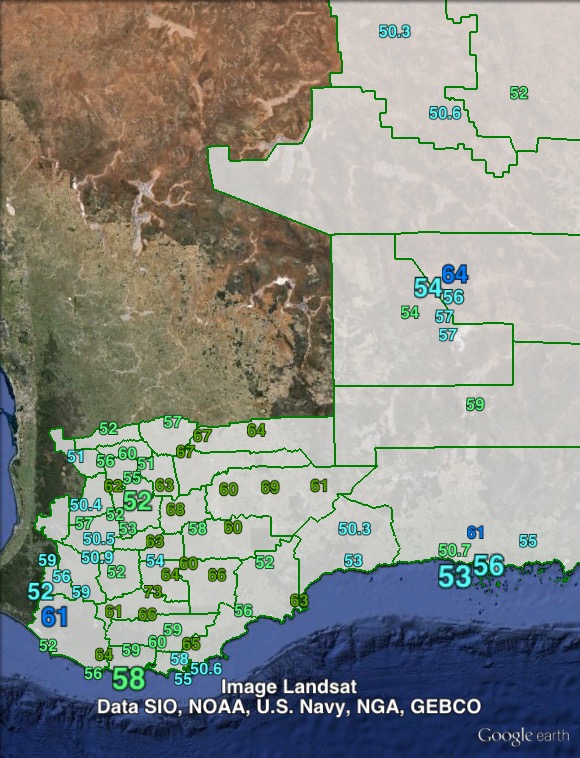
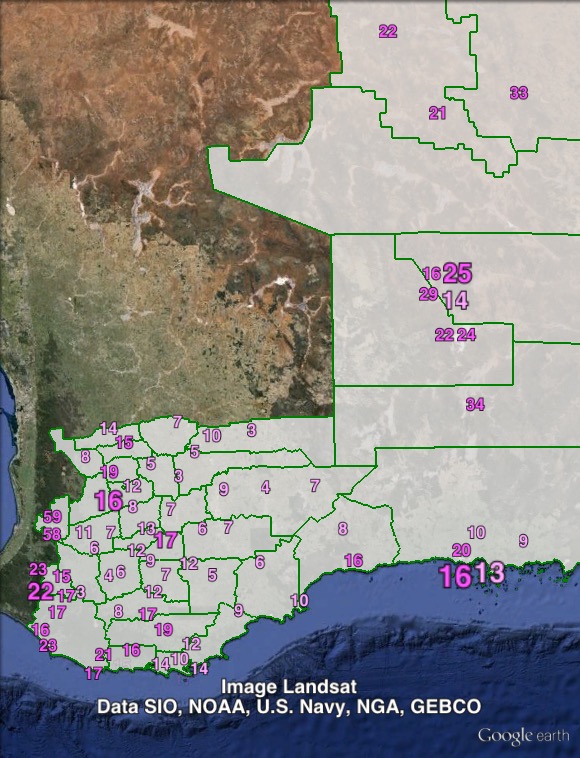
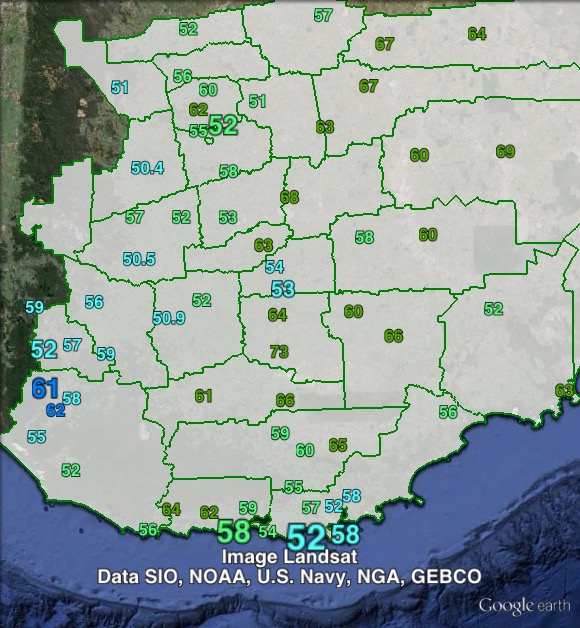
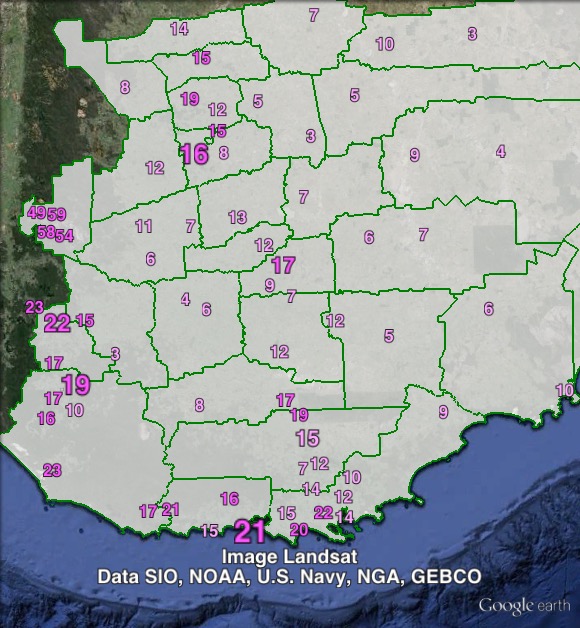
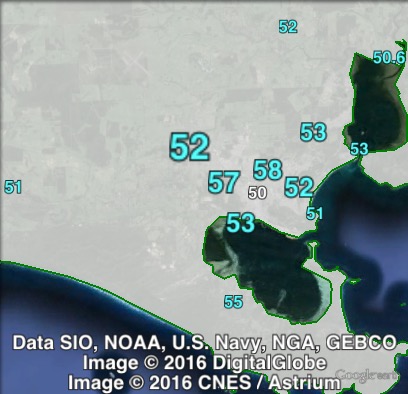
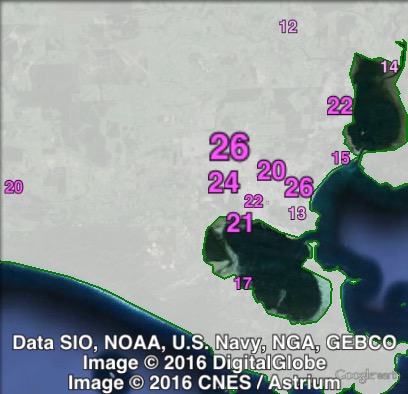
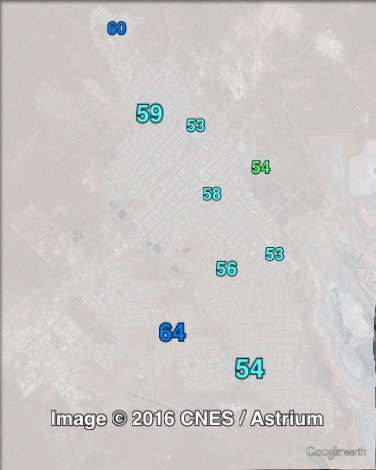
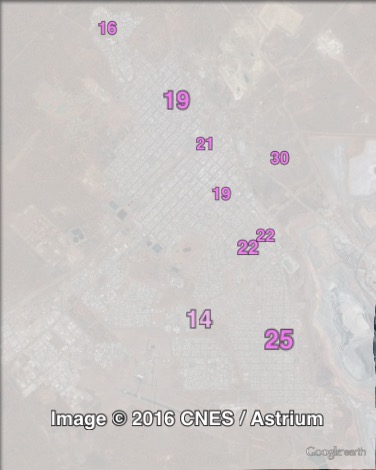
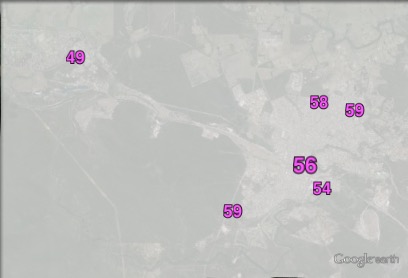


Labor’s vote is OK in Collie (nothing wrong with a primary vote majority), but it’s nowhere near what they get in state elections. Since 2004 the federal vote in the town has ranged between 50% and 60%, while the state vote is in the mid-70’s (even in 2013, an election they lost badly). There’s obviously a fair few people who vote for Mick Murray, but not low-profile federal Labor candidates.
The Nationals have finally announced their candidate for O’Connor, CBH Director John Hassell.
http://www.farmonline.com.au/news/agriculture/general/politics/cbh-director-john-hassell-wins-wa-nationals-preselection-for-oconnor/2752438.aspx
collie should be in Forrest. The state seat of Albany also lies in this seat….. And Labor wins it,
witness the Massive change in Kalgoorlie overtime from a Labor Stronghold to I think at least 60/40 non labor
Collie no longer fits in Forrest, because of (a) population growth in Bunbury, Busselton and Margaret River and (b) existing seats having to be a few % smaller because of the new seat. Forrest only borders two other seats, on the north (Canning) and east (O’Connor); fiddling with the Canning border would involve cutting Harvey shire in half and creating annoying knock-on effects in Perth, and further south would involve a bunch of smaller towns and be fairly messy. Collie’s one decent-sized town surrounded by a whole lot of nothing, so splitting it from Forrest fails the “community of interest” test less badly than, say, Donnybrook and Nannup.
Albany being a Labor seat has nothing to do with the party and everything to do with Peter Watson. He’s managed to get two swings in a row to him despite unfavourable redistributions and the rest of the state going strongly the other way. He’s probably got the strongest personal vote of any politician in the country. Even if Labor win the election next year, if he retires they’ll have a hard time holding Albany. Same goes for Collie-Preston.
except for the first bit….. I agree……… I was pointing out the cross voting….. and the the demographic changes in parts of O’connor.
Can someone who is ALP aligned please explain why they would be preferencing the Libs (who hold the seat) over the Nats?
@Nick
For the ALP to preference the Libs over the Nationals doesn’t make much sense to me on a state level, the WA Nats seem a more independent voice and a shorter bridge to cross for Labor.
Perhaps neither major party wants to encourage “rogue” Nats that shift attention towards investment in regional areas, and for the benefit of the ALP nationally they have made that decision.
Labor’s got a pretty strong candidate for such an unwinnable seat. Jon Ford was a state MLC from 2001 to 2013 and a minister in the Gallop / Carpenter govt.
Labor can’t win, but they can make trouble between the two Coalition candidates. Any loss in the Liberal primary vote would hand the seat to the Nationals if Labor polls well enough and directs to them.
Yeah… except Labor are directing to the Libs. The Nats’ chances here have basically gone the way of the Greens in Batman… they can still win, but need a BIG swing on primary vote.
Yeah, I saw that about 30 minutes after I posted! Oops.
I haven’t seen boo from WA Labor in Albany yet, pretty hard to find any info on Jon Ford online either. But I agree with Bird re Peter Watson, he’ll probably hold the state seat till he carcks it.
Can’t blame Labs for not bothering much with campaign funding down here, the federal seat has been held by Libs for the last 30 years.
My prediction: Likely Liberal hold.
Prediction: Liberal retain
So if you vote Labor you’ll be voting in the Liberal Party and voting out the one other possible candidate, the one of the two who can & will cross the floor.
Bit sad unless the Nationals candidate gets in.
Same goes in Durack, part of the complex preference deal to help Labor win 3 seats over the Greens and help Libersls win 3 seats over Nationals.
Parties more important that voters it would seem